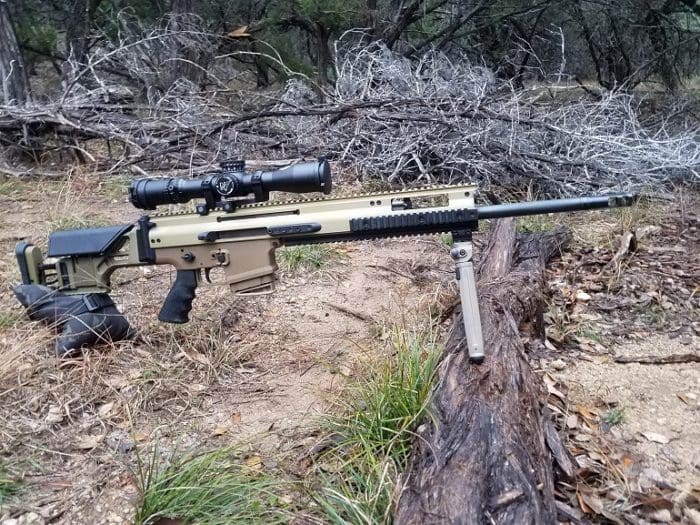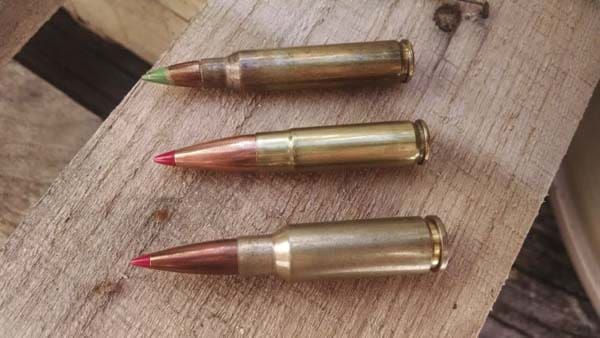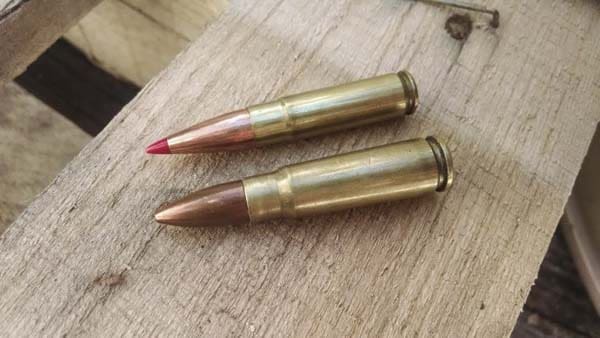The small arms world is ripe with contradictions. In the edifice of ballistic paradox, there resides the haunting presence of some immortal designs. Most of these were likely never expected to live into our modern age by their designers and those who originally adopted them. Some think that the golden days of our armed tradition are long past, but I beg to differ. We live today in an era of ammunition, one that idealizes the past, but has an uncertain future in terms of small arms and ammunition development.
I’ve been in numerous discussions with people over the years about the theory of small arms and the concepts of “perfection” and maximized performance. Most recently, the topic has been about the popularity of 6.5mm rifles, a trend that shows no signs of stopping. I’m not going to get into the depths of that here. What I will say is that there isn’t anything new about the 6.5mm rifle cartridge family. Nor is there anything truly new about most small arms technology.

So what makes a weapon family or a cartridge enjoy a long life? How is it that only a handful of calibers designed in the modern era have much success while so many of those well over a century old are still going strong? The answer is multifaceted.
Two key factors influence the success of a cartridge or a weapon. The first is armed service adoption. The second is fashion. These are the primary drivers of small arms popular success.
A common argument I get into with other gun people is the case of the .276 Pedersen. Many of the original Garand rifles were chambered for this round and it was a ballistic improvement over the .30-06 in service at the time. The cartridge was very similar in size to the modern 7mm-08 and offered the American soldier a superior system to any other in service at the time at a weight savings over competing cartridges.
The small bore race began decades before the .276 Pedersen was designed and featured rounds that still exist today such as the 7.92x57mm, 6.5x55mm, 7x57mm, and .303 British. The main difference between these rounds? The four listed were adopted by various militaries while the .276 foundered and eventually was dumped for the .30-06.
Ultimately, the .30-06 lived on and is still among the most popular calibers worldwide. But why would the .276 not reach the fame some believe it deserved seeing as how it was supposedly better, logistics aside? That’s where fashion comes into play.
Fashion has as much to do with utility as it does popularity. You’ll notice distinct trends in the development of small arms and ammunition that go hand-in-hand with the cultural attitudes and commercial landscape of the time. The .30-06 survived because it never lost relevance to those looking to use it. Much like other turn-of-the-century cartridges, it was a wonder at the time it was introduced and, like the .30-30, .38 Special, .45 Colt, and .45-70, survives to today due to the fact that it had a significant cultural impact on our nation.
In recent years, the AR race has spawned many interesting and unique innovations. Among these are a host of small arms cartridges that exist solely because of the German 7.92x33mm, and by default their great-great grandfather, the 7.92x57mm.
The Germans designed the 7.92x33mm because of experiences learned in World War I. The 7.92x57mm wasn’t the ideal fighting round for the confines of the war and represented the ideal tool of the trenches. With the adoption and immediate combat use of the 7.92x33mm came the era of the intermediate cartridge. I have been corrected my many a person that the .276 was actually the first relatively successful intermediate round, but that isn’t true. The 7.92x33mm was superior in every single way to the .276 because it was one of the very few cartridge and weapon systems designed and perfected during wartime while the .276 was nothing but a theory.
It’s from the lessons learned with the 7.92x33mm that they Russians developed the 7.62x39mm, and with the help of captured Nazi designers, eventually came up with the venerable AK-47. It was because of this rifle and cartridge that the AR-15 was adopted. Say what you will, but few things are original ideas. Because of our 5.56x45mm the 5.45x39mm exists and so on and so forth.

History aside, the culture and fashion of the arms business gave birth to the most successful modern cartridge, the 300 AAC Blackout, or 7.62x35mm. This round isn’t anything particularly special, as it looks like wet garbage on a ballistics table and has a fairly short effective range. But it’s pure magic and infinitely superior to the 6.8x43mm and 6.5 Grendel.
It’s my prediction that .300AAC Blackout will continue to gain in popularity as the other two eventually drop from manufacturers’ catalogs. Why?
The merits of the .300AAC don’t come from its ballistics like so many others. In fact, it’s a step backwards in cartridge development by most standards. The thing that it has going for it is the devilish simplicity of its design and the fact that it’s an easy upgrade for existing AR rifles.
America is and always will be a .30 caliber nation thanks to our past. The .300AAC is the realization of the concept of the STG-44 in modern America and is the heir of the .30-30 to our hunters. It was the right round at the right time. It helped start today’s suppressor revolution by providing a viable subsonic ability to existing rifles and has continued to gain a greater and greater following as a result.
Ballisticians and cartridge theorists often get mad at me when I say these things (mostly because they know deep down that I’m right). Nobody cares what new round comes out these days. It could be a literal laser beam and nobody would bat an eye. People only care about things that work.
Sure, hobbyists and wildcatters will always be around, but if they can’t adapt, their designs will be taken and made ours. There will always be a market for niche weapons and calibers, but don’t get your hopes up that the .276 will make a comeback. It wasn’t the right round then and it isn’t the right round now.

So why is it that certain calibers just won’t die? I read a piece recently about the 7.62x54R cartridge. It wasn’t disparaging, but the author seemed to think he knew better than the Russian military as to their needs. The reason that the cartridge has been going strong since 1891 isn’t that it’s a legacy throwback like Garands. The 7.62x54R was perfected in 1891 and it’s been up to the task ever since. It is just as relevant today as it was back then and it will continue to miff armchair ballistics experts well into the future.
In point of fact, the 7.62x54R is enjoying an increased commercial following these days and high-end manufacturers like Lapua and Hornady continue to make ammunition and bullets for it. This is also the case with rounds like the .38 Special, which has been a wild success the world over for generations due to the fact that it works as well in the weapons designed for it today as it did back in 1898. The .38 Special is also enjoying increased popularity today as it serves as one of the most relied-upon concealed carry cartridges in the country.
Three years after the introduction of the .38 Special, the 9x19mm was adopted and has seen worldwide use ever since. The 9mm, a rather obscure caliber when it was created, would eventually eclipse nearly every other pistol cartridge in popularity and commercial following.
Then there’s the fading .40S&W which will probably fade into obscurity as police and government agencies drop it from their holsters in favor of 9x19mm. Much like the 10mm Auto before it, the .40S&W will likely virtually disappear until it’s again resurrected for a short period of time…only to be forgotten again.
So what then is it that decides which great idea makes it into our cultural lexicon? What products will receive endless hype, only to never catch on? How many wonder-rounds and uber-weapons enter production only to languish in the back of a gun store for eternity?
People are a fickle bunch. We all want something that doesn’t exist in our present and tend to look to our past for inspiration, only to discover that what we desire had been done long ago and we now have to find a way to make what is old new again.




